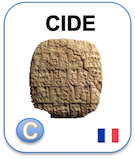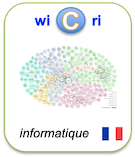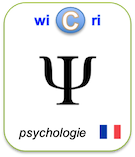Neck Proprioception Shapes Body Orientation and Perception of Motion
Identifieur interne : 002681 ( Pmc/Corpus ); précédent : 002680; suivant : 002682Neck Proprioception Shapes Body Orientation and Perception of Motion
Auteurs : Vito Enrico Pettorossi ; Marco SchieppatiSource :
- Frontiers in Human Neuroscience [ 1662-5161 ] ; 2014.
Abstract
This review article deals with some effects of neck muscle proprioception on human balance, gait trajectory, subjective straight-ahead (SSA), and self-motion perception. These effects are easily observed during neck muscle vibration, a strong stimulus for the spindle primary afferent fibers. We first remind the early findings on human balance, gait trajectory, SSA, induced by limb, and neck muscle vibration. Then, more recent findings on self-motion perception of vestibular origin are described. The use of a vestibular asymmetric yaw-rotation stimulus for emphasizing the proprioceptive modulation of motion perception from the neck is mentioned. In addition, an attempt has been made to conjointly discuss the effects of unilateral neck proprioception on motion perception, SSA, and walking trajectory. Neck vibration also induces persistent aftereffects on the SSA and on self-motion perception of vestibular origin. These perceptive effects depend on intensity, duration, side of the conditioning vibratory stimulation, and on muscle status. These effects can be maintained for hours when prolonged high-frequency vibration is superimposed on muscle contraction. Overall, this brief outline emphasizes the contribution of neck muscle inflow to the construction and fine-tuning of perception of body orientation and motion. Furthermore, it indicates that tonic neck-proprioceptive input may induce persistent influences on the subject’s mental representation of space. These plastic changes might adapt motion sensitiveness to lasting or permanent head positional or motor changes.
Url:
DOI: 10.3389/fnhum.2014.00895
PubMed: 25414660
PubMed Central: 4220123
Links to Exploration step
PMC:4220123***** Acces problem to record *****\Le document en format XML
Pour manipuler ce document sous Unix (Dilib)
EXPLOR_STEP=$WICRI_ROOT/Ticri/CIDE/explor/HapticV1/Data/Pmc/Corpus
HfdSelect -h $EXPLOR_STEP/biblio.hfd -nk 002681 | SxmlIndent | more
Ou
HfdSelect -h $EXPLOR_AREA/Data/Pmc/Corpus/biblio.hfd -nk 002681 | SxmlIndent | more
Pour mettre un lien sur cette page dans le réseau Wicri
{{Explor lien
|wiki= Ticri/CIDE
|area= HapticV1
|flux= Pmc
|étape= Corpus
|type= RBID
|clé= PMC:4220123
|texte= Neck Proprioception Shapes Body Orientation and Perception of Motion
}}
Pour générer des pages wiki
HfdIndexSelect -h $EXPLOR_AREA/Data/Pmc/Corpus/RBID.i -Sk "pubmed:25414660" \
| HfdSelect -Kh $EXPLOR_AREA/Data/Pmc/Corpus/biblio.hfd \
| NlmPubMed2Wicri -a HapticV1
|
| This area was generated with Dilib version V0.6.23. | |



